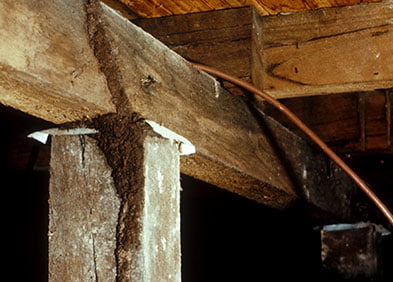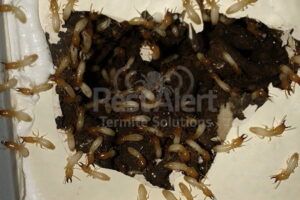Posted October 26, 2016 by Sarah Malone
Category: Termites
 Found Termites? DONT TOUCH THEM! It is best to call the professional to arrange a termite inspection to be carried out.
Found Termites? DONT TOUCH THEM! It is best to call the professional to arrange a termite inspection to be carried out.
What to expect during an inspection?
Your technician will inspect all accessible areas of the building which include subfloor area (if accessible) roof void, interior, exterior, garden areas and fences within 50 meters of the building.
A pest controller reports back with possible termite activity, termite damage and also anything around the property that could attract termites.
What happens after an Inspection is carried out?
If no termites are found: As a home owner you can decide if to have a preventative termite barrier applied or have regular inspections carried out to ensure early detection should termites attack at a later date.
Some preventative termite barriers include
- Chemical Soil Barriers – These can be applied under the house in the sub floor area and around piers. (If undisturbed this barrier can last up to 10 years). This barrier can also applied around the exterior of the building into the soil or injected under the concrete paths. (This method generally lasts around 4 years).
- Termite Monitoring Systems – Termite monitoring stations are applied around the building every 3 meters to detect any termite colonies that get close to the house. These can be purchased and installed by you as a property owner or you can pay a pest controller to install and monitor these stations which takes the stress away from you.
What to do when termites are found?
Unfortunately termite management is an ongoing process. Termites are part of our environment and we as home owners can unknowingly encourage termites to enter our properties. There is no single and permanent termite solution and there are many different types of treatments available to help all different types of homes. Pest controllers will give you a list of types and you can pick the one that best suits you.
Some of the more common treatments can include:
- Chemical Soil Barriers – This is a preventative option however if termites are found outside the building it is a good idea to have this treatment carried out to stop them from entering the home however it still strongly recommended to have another treatment carried out alongside of this barrier to kill out the attacking nest.
- Termite Baiting Systems – Termite baiting stations are applied to where the active termites around found and baited using a highly palatable food source in which they take back to the nest and fed to the entire colony thus destroying the attacking nest.
- Termite Dusting – A termite dust is applied to an active termite affected area and when a nest cannot be located. Dusting is effect treatment as termites will feed and groom each other which assists in the ‘Transfer Effect’. Thanks to this the termites only have to be directly dusted and no ingestion is required to die. The termites then take the dust back to the nest to further spread into the colony, as when termites die the others will eat their carcases which continues the treatment further. Research has shown it can take as little as two to four weeks to eliminate the colony.
- Termite Nest Location – Technicians are highly trained in the location and elimination of termite nests. Sometimes nests are as obvious as a soccer ball sized dirt mound which can be dug up and treated however, by test drilling nearby suspicious trees and stumps we are able to determine if the attacking termite colony is concealed. If a nest is found a termite treatment can be applied through these drill holes. These test holes are carried out to do the least possible harm to the tree and it is highly unlikely that these test holes will kill the tree. This method is used to treat the nest directly.
Whichever treatment you chose has limitations and it is important to discuss these with your pest controller and always have regular inspections carried out to prevent future termite attack.
Click for further information on Termite baiting and Dusting Treatments.
Exterra or
Photo Credit: Forestry and Forest Products






